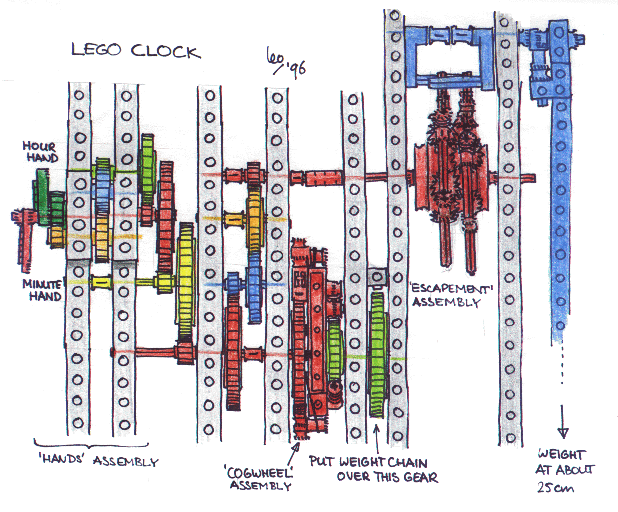
This is a flat clock, with (apart from some detail in the hands assembly) all axles in one plane. This is done for clarity; it is obviously possible to make everything more compact. I have labelled gears on independent axles by different colors.
The weight you will need depends on the friction; a weight of 2-5 kg should suffice. The LEGO chainlinks will not take much more anyway; when you try this out, put a pillow on the floor underneath your weight, it prevents dents! In my version, the weight drops quite a bit, and I can not really run the clock for longer than an hour before it needs to be raised. If I could let the chain take more (for instance by two parallel chains), then I could overcome more friction and therefore put in a larger delay. But I doubt that the friction can be overcome enough to require recharging only once a day. Hey, it's only LEGO; this is just the principle. But let me know how long you can make it run...
As weight for the pendulum you can use a standard Lego weight, or a LEGO motor. You need to adjust the period to your needs.
Not all of you may have as many large 40-tooth gears as this example requires.
You can replace them by more smaller gears, of course. As long as the total
gear ratio is close to the one here,
you can do the rest by adjusting the pendulul
Subassemblies for the
three essential elements are given on separate pages:
the hands,
the escapement, and the
cogwheel
(which enables you to lift the weights without stopping the clock).